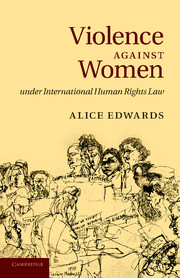Book contents
- Frontmatter
- Contents
- Preface
- Acknowledgements
- Table of cases and advisory opinions
- Table of treaties and other international instruments
- Abbreviations and acronyms
- 1 Introduction
- 2 Feminist theories on international law and human rights
- 3 The international human rights treaty system: practice and procedure
- 4 Equality and non-discrimination on the basis of sex
- 5 Torture and other cruel, inhuman, or degrading treatment or punishment
- 6 The right to life
- 7 Conundrums, paradoxes, and continuing inequality: revisiting feminist narratives
- 8 Strategising next steps: treaty body reform and towards humanising women
- Bibliography
- Index
7 - Conundrums, paradoxes, and continuing inequality: revisiting feminist narratives
Published online by Cambridge University Press: 05 July 2011
- Frontmatter
- Contents
- Preface
- Acknowledgements
- Table of cases and advisory opinions
- Table of treaties and other international instruments
- Abbreviations and acronyms
- 1 Introduction
- 2 Feminist theories on international law and human rights
- 3 The international human rights treaty system: practice and procedure
- 4 Equality and non-discrimination on the basis of sex
- 5 Torture and other cruel, inhuman, or degrading treatment or punishment
- 6 The right to life
- 7 Conundrums, paradoxes, and continuing inequality: revisiting feminist narratives
- 8 Strategising next steps: treaty body reform and towards humanising women
- Bibliography
- Index
Summary
Introduction
This book has examined how women's experiences of and concerns about violence are incorporated into specific provisions of international human rights treaty law. Two main feminist strategies were identified: the first was the conceptualisation of violence against women as a form of sex discrimination and the second was the creative reinterpretation of existing provisions to apply them to the experiences of women. The latter discussion focused on the rights to life and to be free from torture or other cruel, inhuman, or degrading treatment or punishment. These strategies have developed for a number of reasons, not least owing to gaps in the international legal architecture reflected in the failure of the international community to agree an explicit treaty or provision guaranteeing women protection from violence. The preference of the United Nations has been instead to opt for a non-binding declaration and a ‘gender mainstreaming’ strategy that requires all UN bodies to ask ‘the gender question’ in relation to all instruments, mechanisms, laws, policies, and programmes. This book was interested in what these two strategies have meant in reality for female victims of violence, as well as what they tell us about where feminist scholarship and the four main feminist critiques of international law outlined in Chapter 2 are today. What have these inclusion strategies meant for female victims of violence? What have they meant for the feminist critiques outlined in Chapter 2? Are these feminist critiques still relevant, or can they be set aside as finally resolved?
- Type
- Chapter
- Information
- Violence against Women under International Human Rights Law , pp. 304 - 320Publisher: Cambridge University PressPrint publication year: 2010



